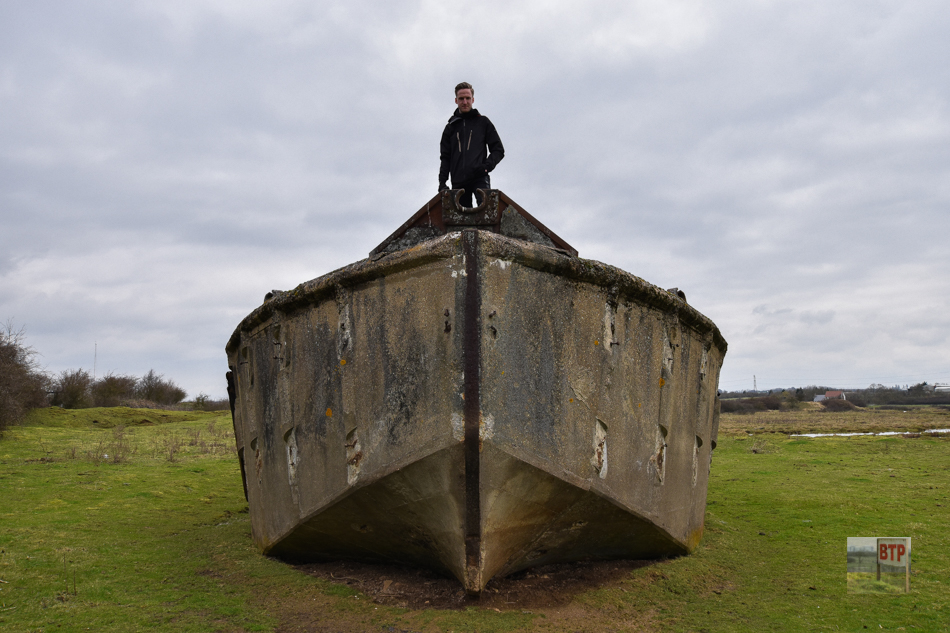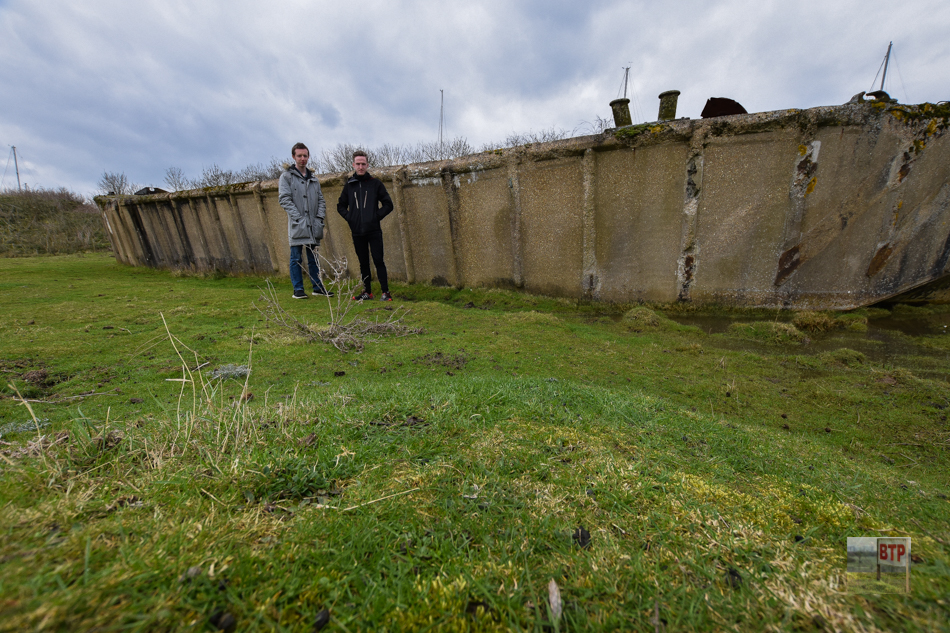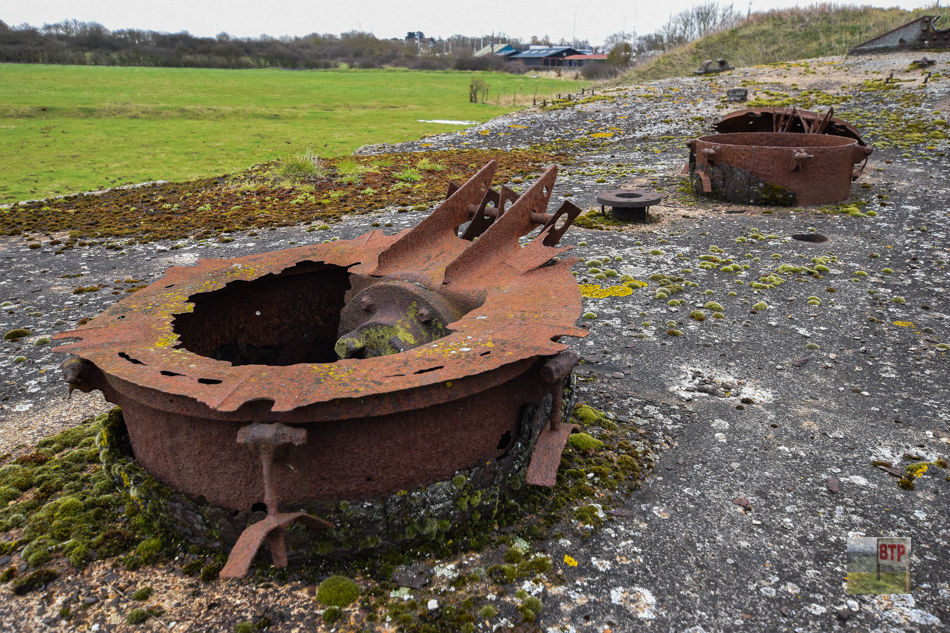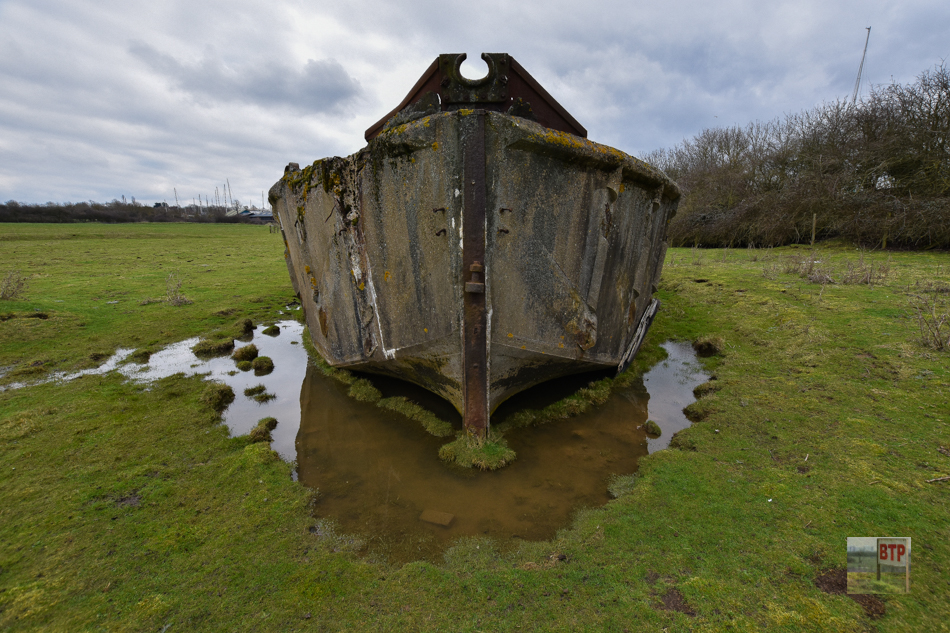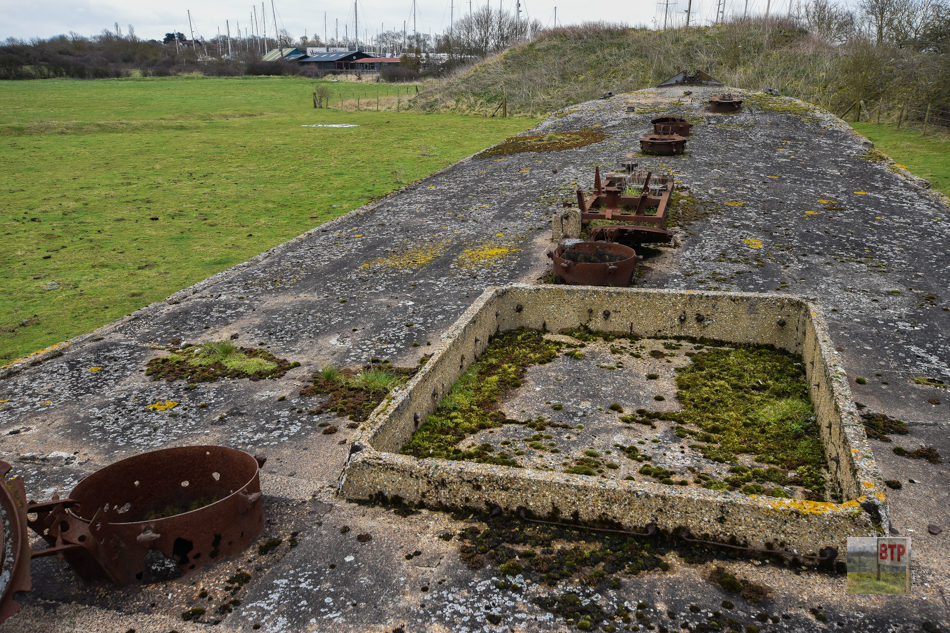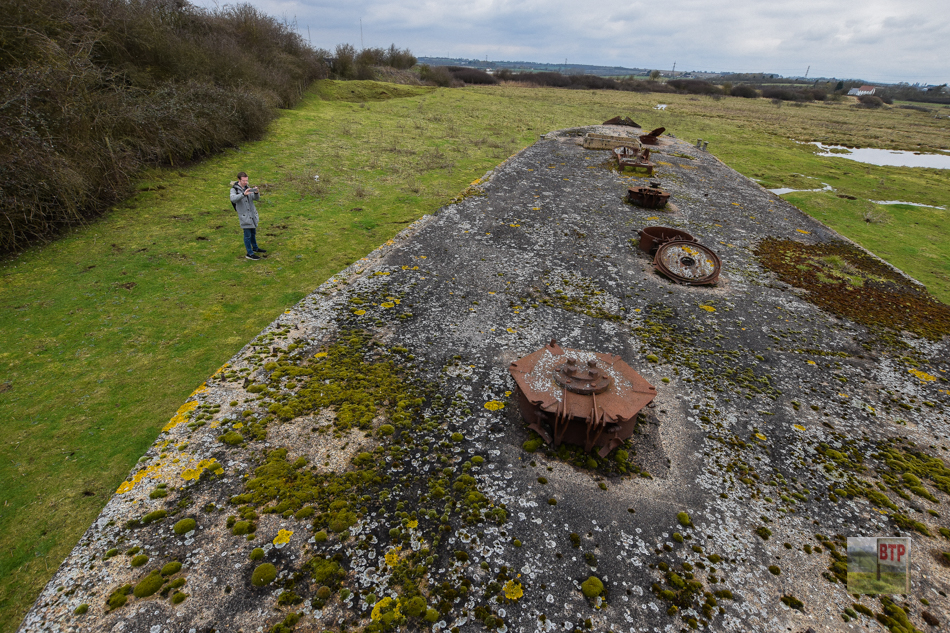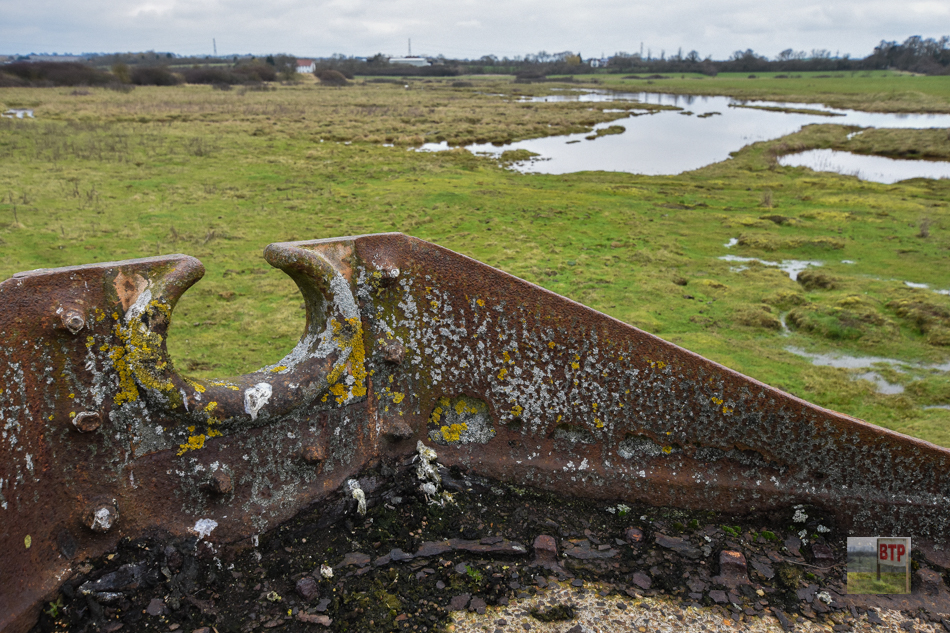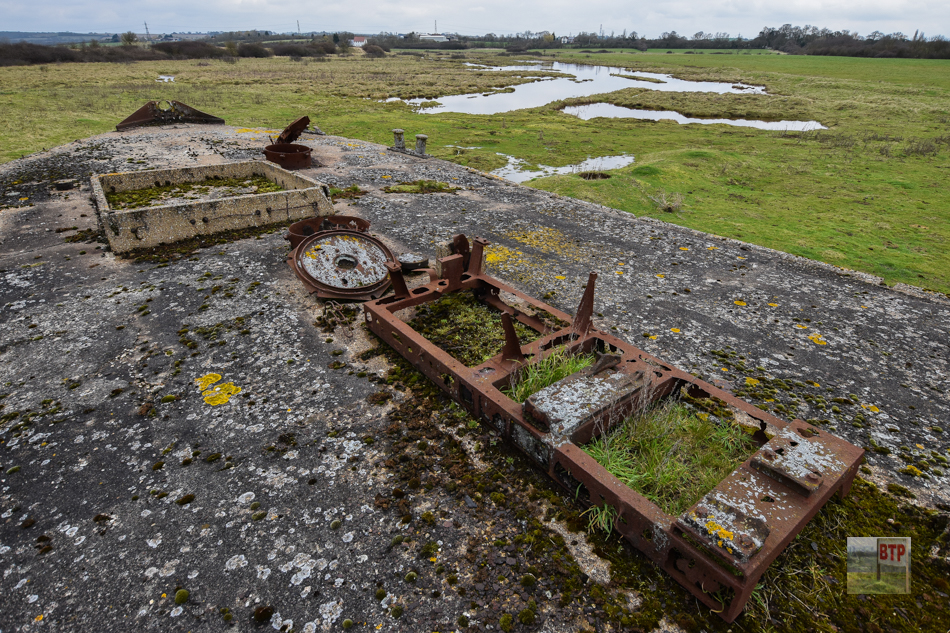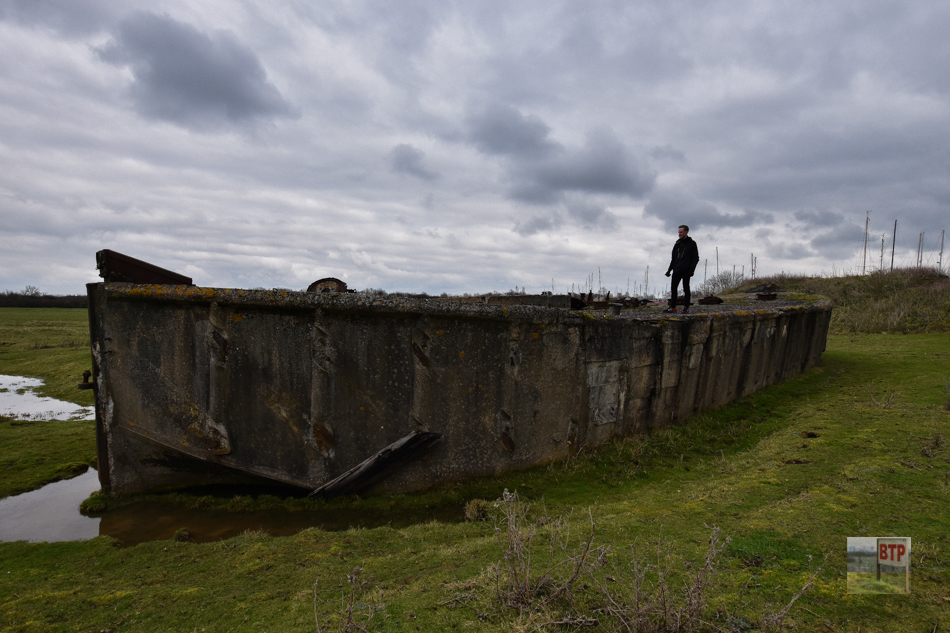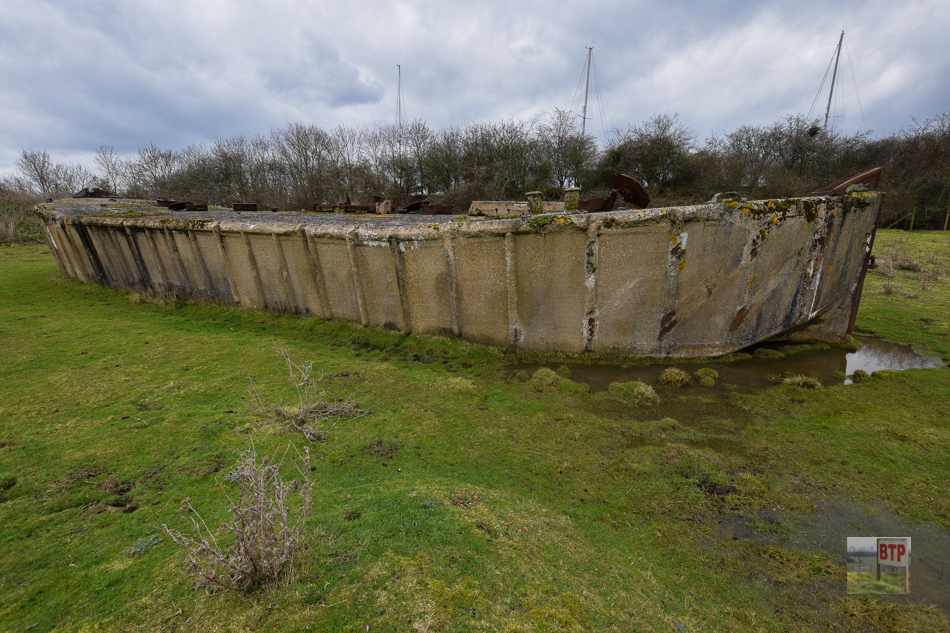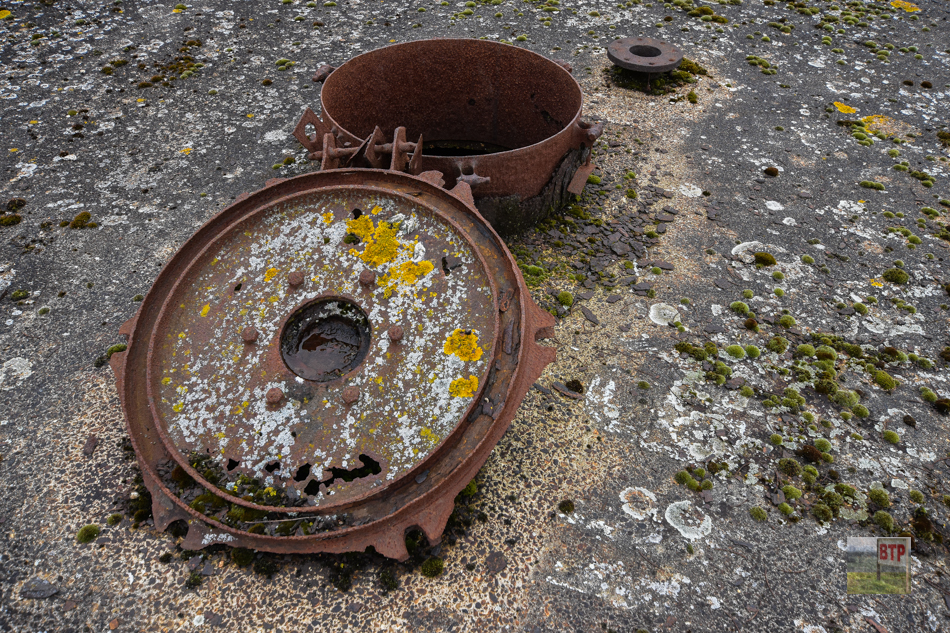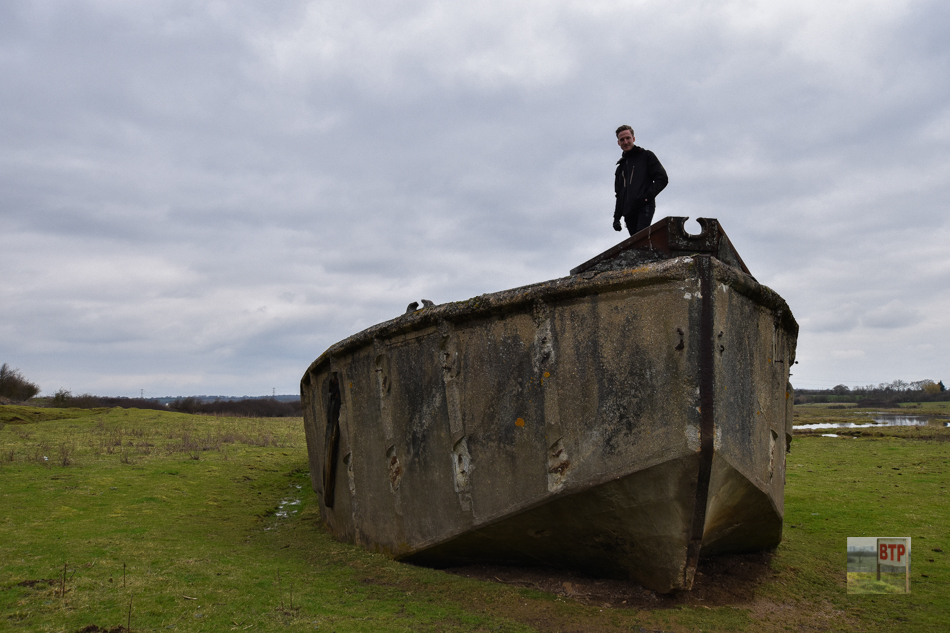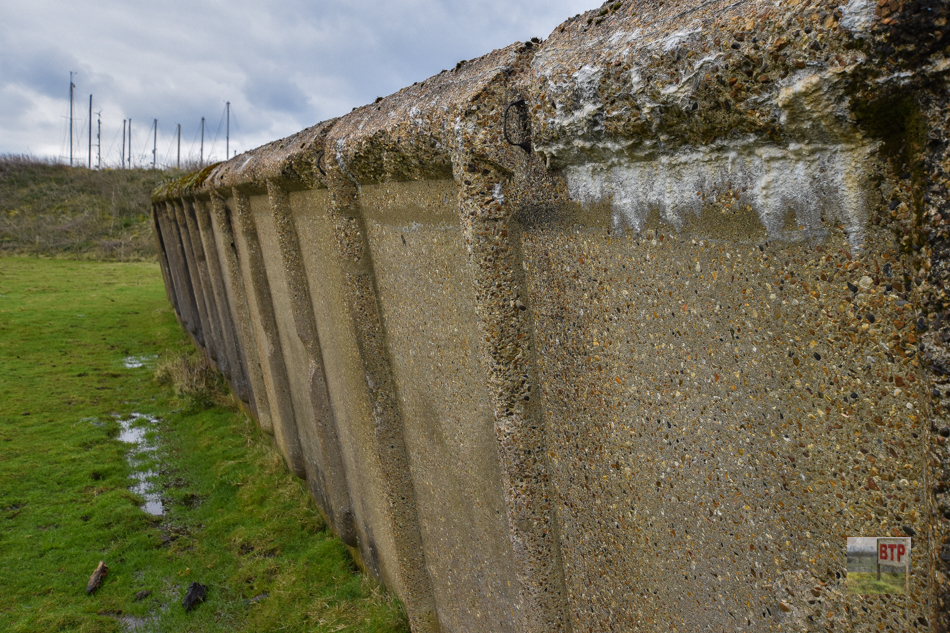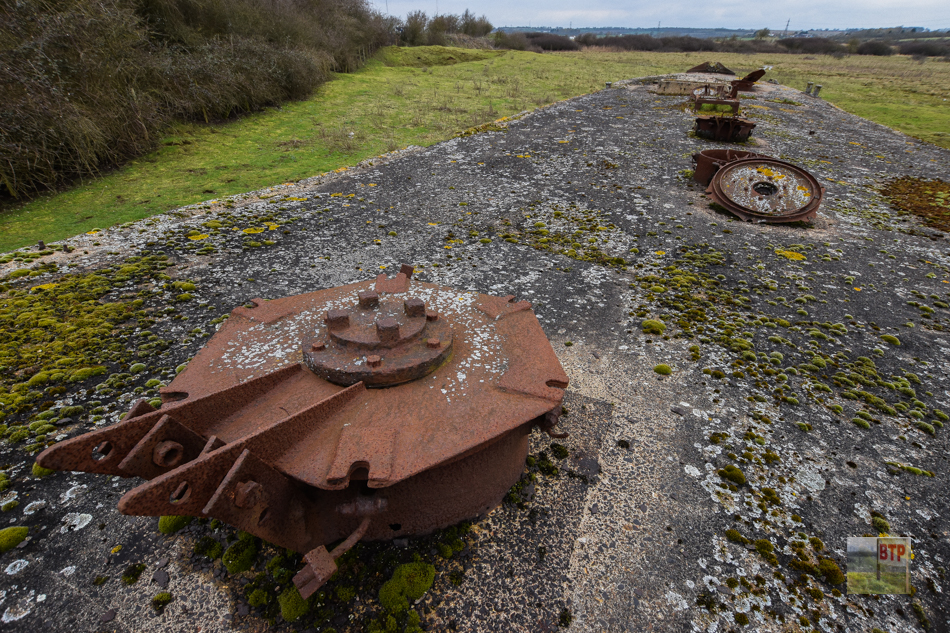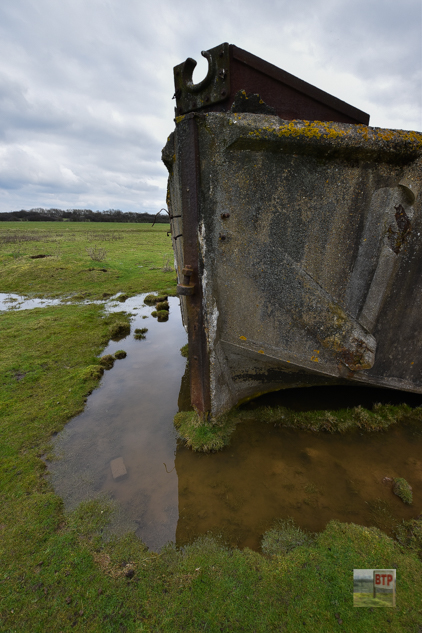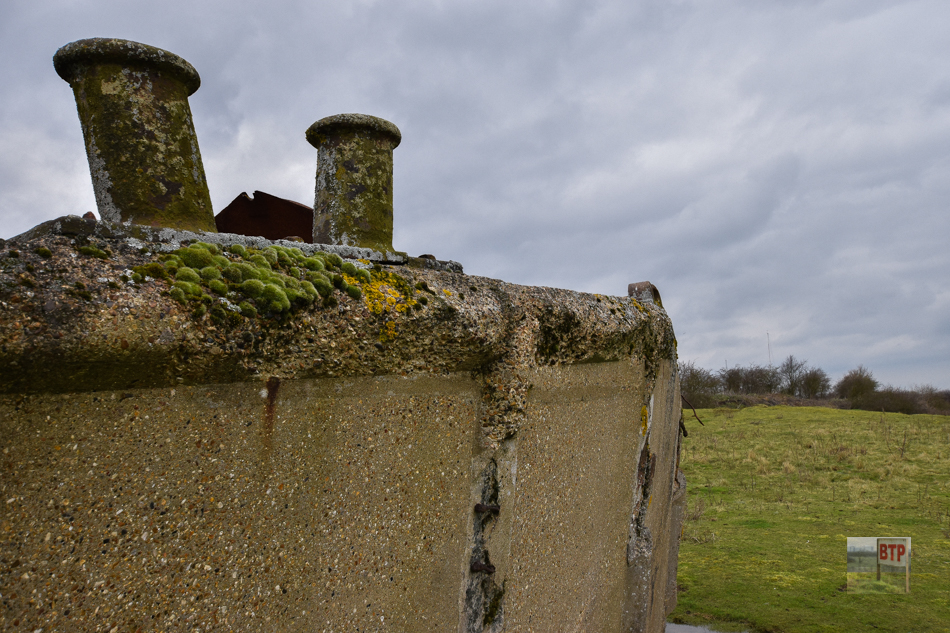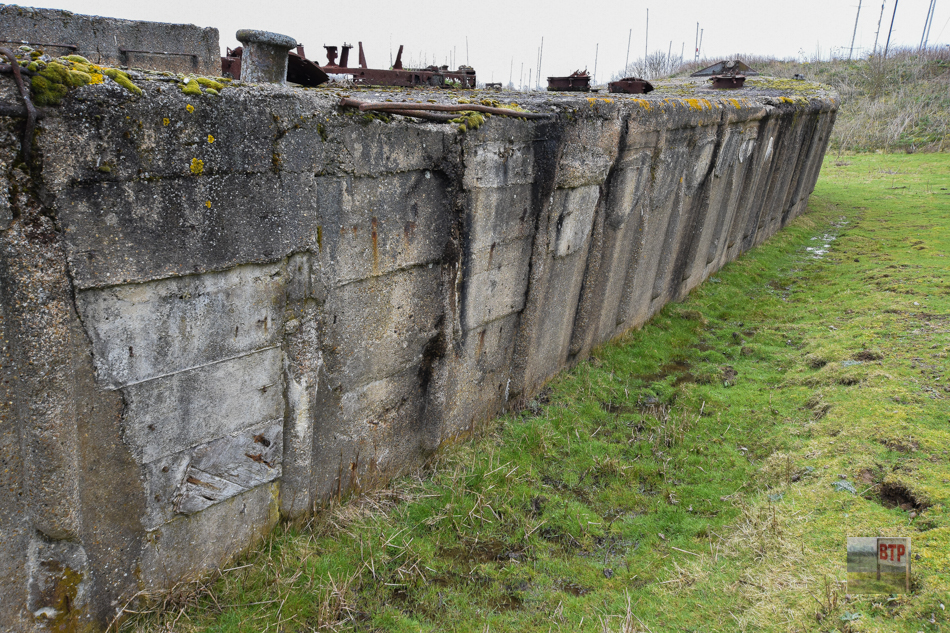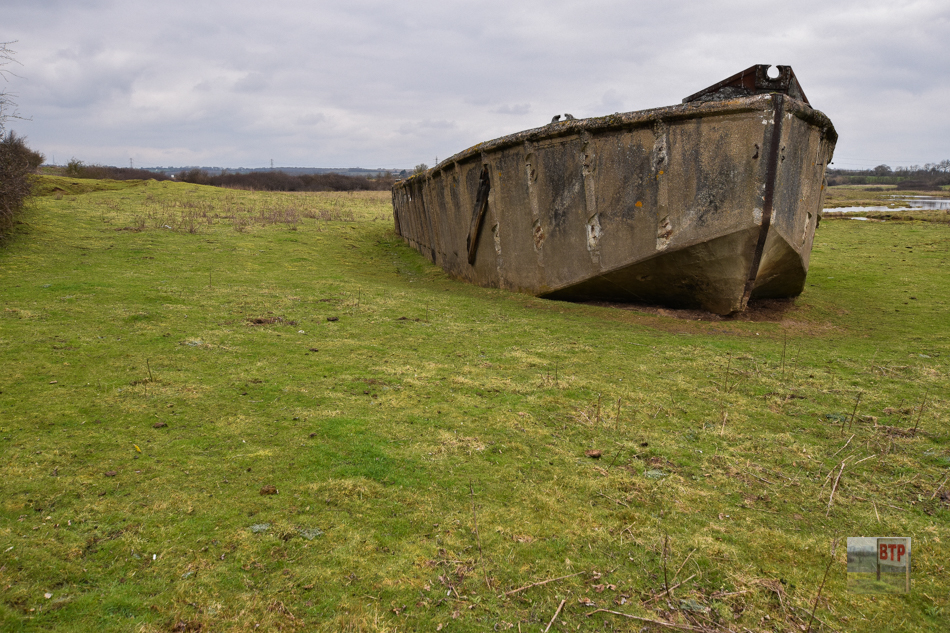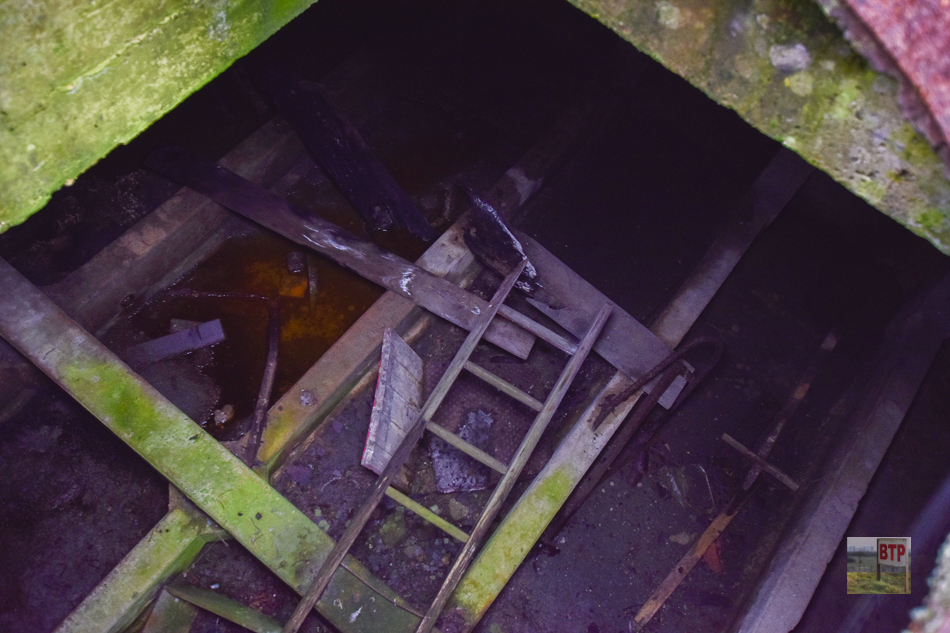In the marshy area adjacent to North Fambridge marina lies a ferro-concrete barge partially submerged in a field. Once stranded in the marshland, this barge exists as a peculiar hulk misplaced from its maritime origins and today exists buried into the earth following the reclamation of the area into farmland. This example is in good condition, still featuring the metal hatches and details on its top surface as well as woodwork along its bow. The inside is flooded at the rear although dry towards the front, despite being inaccessible without a ladder. The depth and size of its interior came as a surprise – you would not want to fall in!
Ferro-concrete barges were constructed in the Second World War as a substitute for steel barges. This is because steel was valuable for the construction of guns, planes, tanks, and warships. Their mesh-reinforced concrete sections were bolted and cemented together. Wooden timbers were attached to the outside to protect the hull from collision with dock walls and other vessels. They had a cargo capacity of 185 tons, and were attached to Mulberry Harbour cassions afloat in the English Channel during the D-Day Landings of 1944 used as supply points for the Allied forces. The barges aided in the transportation of munitions and fuel, acted as pontoons, blockships, and were occasionally as troop carriers and canteens if they had engines attached.
Sources:
https://www.iwm.org.uk/collections/item/object/30018296
https://en.wikipedia.org/wiki/Concrete_ship#cite_note-11

